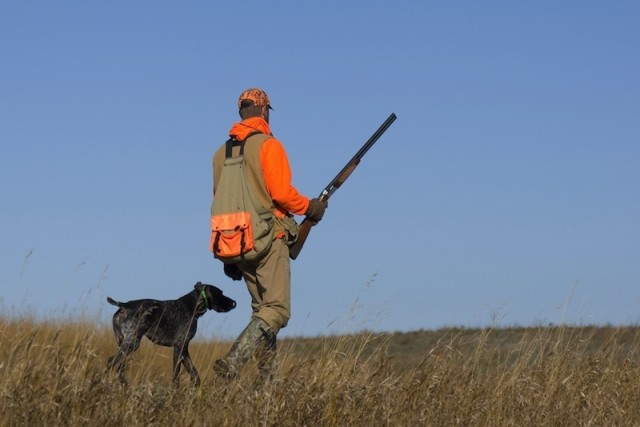A City Slicker's Guide to Hunting

Image: Steve Oehlenschlager
Hunting season is upon us. What does this mean for you, the protoypical urban dweller? Well, among other things, it's a chance to immerse yourself in Oregon’s scenic wilderness. But if it’s your first time, hunting can be an intimidating sport to take up.
We asked Oregon Department of Fish and Wildlife’s Michelle Dennehy for some basic tips on a successful first hunt—even for us city folk.
LICENSING
- General hunting license cost $29.50 for residents and $140.50 for nonresidents and are good for one year. (A combined hunting/fishing license is available at $58 for resident.)
- Additional tags required for big game like black bear, deer, or elk and birds such as duck, geese, and pheasant. Tags range from about $10-$40. Squirrel and rabbit hunting does not require an additional tag.
- People age 17 and under must pass a hunter education course before obtaining a license, although Dennehy suggests any beginner take this class for its thorough introduction to hunting.
- All materials can be purchased online, at ODFW offices that sell licenses, or at a license sales agent like Bi-Mart, Fred Meyer or Sportsman’s Warehouse
- Find more information on licensing here.
EQUIPMENT
“People get scared into thinking they need all this expensive gear and they really don’t,” Dennehy says. You need a gun, obviously (bird hunters need a shotgun and big game hunters need a rifle). Beyond that, here are some necessities:- Clothes to keep you warm or dry depending on type of hunt. Upland bird and big game hunters just need warm clothes and good pair of hiking boots. Thick clothes and boots recommended if walking in rough terrain (and you will be).
- Waterfowl and turkey hunters wear camouflage or drab clothing (because waterfowl and turkey have excellent eyesight). Waterfowl hunters should have waders (for the likely chance you will be wading in high water).
- A good knife to dress game (shears are fine for birds and smaller game)
- Binoculars for big game and waterfowl hunting, although they are useful for all types of hunting.
- Hunter orange: Wearing a fluorescent “hunter orange” hat or upper garment is required for youth (age 17 and under) hunting big game or upland birds. It’s highly recommended for adults too. Deer and elk won’t see the color but other hunters will. (Waterfowl and turkey hunters don’t need to wear hunter orange as the eyesight of these animals is excellent and it would reduce hunting success.)
- Survival gear: If you are hiking somewhere remote to hunt, all the rules of camping survival apply: Bring a day’s worth of food, warm clothing/sleeping bag/emergency blanket, water, etc. Tell someone where you are going and when you plan to be home.
- A hunting dog makes bird hunting easier but it isn’t necessary.
WHEN & WHERE
- Most bird seasons are in the fall, beginning in September or October and sometimes running as late as January 31.
- October and November are the main months for big game hunting like deer and elk.
- There is also a six-week spring turkey season from mid-April through the end of May.
- “We typically recommend small game (squirrel, rabbits) and birds for beginners. Not only can the hunting be easier, but if you do take an animal, it’s much easier to field dress and pack out than a large animal like a deer or elk,” Dennehy says.
WORKSHOPS
“ODFW has hunting workshops geared for beginners," says Dennehy. "We provide all the firearms and ammunition plus a safety lesson and shooting practice in a very welcoming environment. Many workshops also involve a real hunt with guides and hunting dogs."
Best of all? Most one-day workshops are less than $50 (not including cost of licenses and tags).
For a full calendar of workshops, click here.
“Guides are great because they know where the game animals are, but they can be expensive. Guides for big game hunts can be $2000–$10,000. A hunt at an upland bird preserve can cost $200-$400 per hunter for a day of hunting,” Dennehy says.OTHER TIPS
- If possible, go out with a friend or family member who hunts—this is one of the best ways to learn.
- Practice shooting at a gun range.
- Read up on the type of habitat and food game animals need.
- Get familiar with your quarry. For birds, go to oregonhuntingmap.com to see upland bird ranges and our how-to tips on how to hunt.
And most importantly, be safe!
